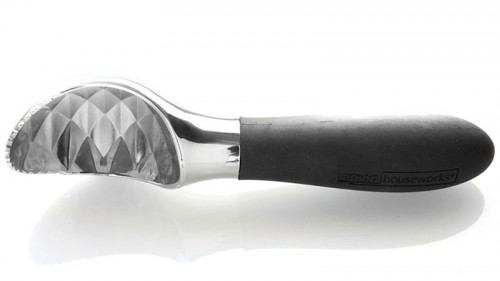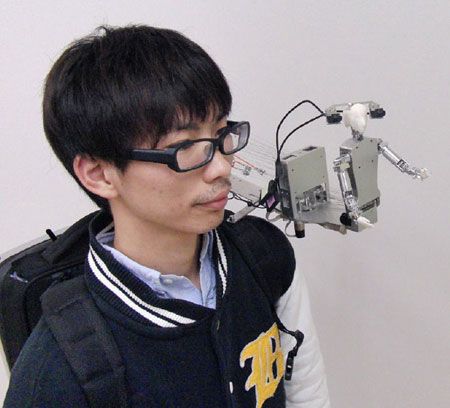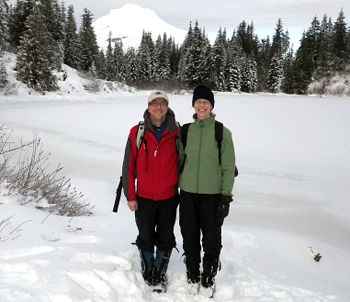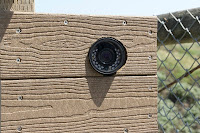 |
| Bix with her Rocket, Buttered Bacon |
 |
Buttered Bacon
on the
Launch Pad |
 |
| Lift-off |
A few months ago, Bix had built a model rocket and we finally got a chance to launch it. Yesterday we went to NASA AMES for the
LUNAR rocket club launches. Its pretty spectacular to actually launch your own model rocket from a NASA facility. Widdakay launched one a couple of years ago, but this time it was Bix's turn. Of course, it's not good enough to be just like her brother, so Bix's rocket, "Buttered Bacon," was a complex, two stage rocket with a payload section. The first launch went flawlessly with both stages burning and the rocket shooting straight up almost out of sight.
With one solid launch under our belts, Bix and Widdakay decided to go for a second launch, but this time they included a special high-tech payload. While Bix designed her rocket, Widdakay designed and built an electronic payload that packed 11 sensors into ~12 grams and fit in the payload compartment of Bix's rocket.
For those of you unfamiliar with model rocketry, these rockets are made mostly of cardboard and balsa wood parts. The run off of a small solid propellant that is remotely fired with an electronic igniter. The rockets then launch themselves up into the air. The propellants are designed to push for a period of time and then "coast" for a while before firing a small ejection charge in the opposite direction which effectively puts pressure into the tube which causes the nose cone to pop off and pull out a parachute which allows the rocket to gently return to earth.
 |
| Widdakay's Sensor Payload Unit |
Widdakay's was designed specifically to measure the flight of these small rockets. The tiny payload included 3 accelerometers, 3 magnetometers, 3 gyros (for each of the three dimensions) as well as a temperature sensor and lastly a barometric pressure sensor. The little package was designed to log all this telemetry data to a microSD card for later analysis. For those of you who are interested, Widdakay built this on an Arduino ProMini and had some fancy software to poll all the sensors about ten times per second and even do a little bit of complicated math to calculate quaternions, which are a fancy way to represent the orientation of the rocket.
This second launch was a bit nerve racking because another person with the same two stage rocket design had just had his rocket explode on separation of the first stage. After all the work that had gone into it, we didn't want to lose our rocket or payload. Our analysis of the failure was that there was too much pressure when the ejection charge went off on the first stage, and it caused the catastrophic failure. We were concerned that this problem could affect Buttered Bacon, so we quickly cut a couple breathing holes in the first stage to allow it to vent the ejection charge.
 |
| The chute didn't fully deploy, so the rocket descended quickly |
The launch went smoothly with both stages firing smoothly and the rocket seemed to go nearly as high as it did in the first flight, even with the added weight of the payload. At its apogee, the ejection charge fired and the chute came out, but it never fully deployed, so the rocket came down much more quickly than we wanted. It landed pretty hard onto the concrete runway of NASA AMES. Thankfully, on inspection we found very little damage to the rocket and only a few bent pins on the payload.
 |
| On site data analysis |
Next it was time to interpret the data. It seems that due to occasional glitches in the hardware, occasionally data would get corrupted. While the data loss was minimal, it did mess up the formatting enough that it made it difficult to interpret the data right there on the tarmac. Instead we decided to head back to the Digital Diner and do our analysis there where we have access to tools like Google Refine which helps immensely in cleaning up raw data.
After we trimmed away all the data from the rocket standing on the launchpad and the corrupted lines, we were ready to start our analysis. Of course, one of the first things we wanted to find out was how high did the rocket fly? To do this, we looked at the data from the barometric pressure sensor.
The data shows a beautiful dip in atmospheric pressure starting just at liftoff, continuing for about 6 seconds and then over the next 20 seconds or so, returning to its original reading. This is just what we would hope to see. It shows that the barometric pressure dropped as the rocket shot up in altitude. Thankfully, since the relationship between pressure and altitude is well understood, there is an equation that can convert this to value to altitude of our rocket.
By applying this to our data, we get the following curve:
According to this data, the height at apogee was 483 ft and it happened about 5.6 seconds into the flight. Pretty cool! We got this information from just one sensor. We have plenty more to analyze. We'll do a complete analysis in a short paper, but for now, lets just look at the accelerometers to see what we can learn. Below is a view of the accelerometer data for the first few seconds of flight.

At first, what you see is two accelerometers (accel X & accel Z) reading zero, while accel Y(the blue line) reads about 1 G. This is just what you would expect from a rocket sitting still on the launch pad. The X and Z accelerometers were horizontal, while the Y accelerometer is pointing up and down, so it is being pulled toward the earth at exactly 1 G. When the rocket engine fires, we see a big burst of acceleration in the same orientation as gravity (ie the Y direction) as the rocket lifts off. This maxes out at about 6 Gs worth of acceleration and then begins to drop off. Within about a second, this engine has died out and the second stage starts to burn. Now with a much lighter rocket, the acceleration reaches nearly 10 Gs. By the end of this burn, the rocket has reached it's top speed. As this second stage burns out, you can see the rocket begin to coast.
At the beginning of the coasting phase, there is a slight negative acceleration on the blue line, as the friction of the air slows the rocket down. Eventually, as the rocket reaches its apogee you will notice that all the accelerometers read approximately zero. This is because as the rocket is in free fall, which to the sensors (and you if you were in the rocket) is indistinguishable from weightlessness. If you are falling at the same speed as everything around you and nothing is stopping you from falling, you will experience weightlessness. This is what astronauts feel as they are in orbit. Essentially, they are continually falling towards the earth (and missing) and they experience weightlessness in just the same way as the sensors in this little rocket.
Eventually this weightless bliss is violently interrupted by the ejection charge. You can see that the nose cone (with the sensors in it) is pushed away from the body, but then gets caught on the rubber tether that holds body and the nose cone of the rocket to the parachute. It looks to me as if it bounces around a couple of times before the chute unfurls which shows up as a nicely dampening oscillation in the acceleration.
We have plenty more sensors to analyze, but this post is getting a bit long. We will try to write up a little paper and publish it here for those of you who are interested in such stuff. Stay tuned.
In the mean time, thanks for reading this far.















































